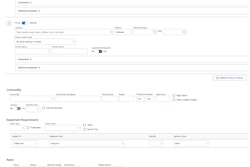When I was a hotshot young reporter in an international newsroom in 2017, my job sent me to run the London office's news operation. I was excited to spend a year of my 20s in Europe, but when I got there I found out a big part of my daily work would be updating the social media accounts of brand's Australian site during the wee hours of Sydney time.
Being a young hotshot, I politely refused. Or maybe I wasn't polite, but I was sure this wasn't the job of a reporter, and not what I had been promised before uprooting my life and taking a job across the Atlantic.
Eventually, management started using an app that allowed them to schedule posting overnight, and I got on with my real work: researching and writing stories. The lesson here is that workers want to fulfill their job titles, but so often in practice they find themselves so busy putting out fires or attending to mundane, monotonous tasks that the accountant doesn't get around to much accounting, the dispatcher may not get around to doing much dispatching, and, most disastrously for fleets, the driver doesn't get around to driving and quickly moves on to another job with the promise of more miles.
That's where robotic process automation, or RPA comes in. Far from a dystopian job-killing top-down tech solution from corporate management, presenters at the Truckload Carriers Association's recent webinar on RPA pitched the technology as a way to restore humanity to work, and ultimately boost retention.
How Robotic Process Automation works
With fleets constantly struggling to recruit and retain the best talent, a historically tight labor market, and an industry in a state of constant technological upheaval with redundant systems and app overload, Larry Kerr, President of EBE Technologies, a company that consults on and sells RPA services, said it might be time to let robots do some of the more soul-crushing work.
"In today's labor market, we really have to look at how does RPA play into managing and staffing an organization, either on the back office or the front office," said Kerr. "By using RPA, the opportunity there is to really allow employees to excel in their specialized field.
This means cutting down the amount of time someone might spend updating spreadsheets, or jumping between two different web portals. Kerr defined RPA as system that "simulates an employee."
"Some positions that might have high turnover are really positions that are repeating a lot," said Kerr. Whether that's keying information into a shipper website to comply with shipper demands or comparing data between two systems, these acts of manual data entry are slow, boring and prone to error, according to Kerr. This boils down to simply writing programs that can automatically interface with web portals and spreadsheets.
Kerr said once RPA enters the equation it can complete a team's capacity to complete work by 35% to 100%, with data processing time specifically cut down by 30% to 70%. Also, cutting down on errors in accounts payable can also help tremendously, if, for example, a transposition error causes a bill to be paid twice.
"RPA is really a database," said Kerr, who stressed that automating the processes allows workers to "do what they do best" and simply check them for errors. A company's human resources ends up working on "exception management," or dealing with odd occurrences that require a human touch, not simply sending a shipper a POD after delivery, which an RPA can handle.
The result is improved customer service, he said. "A lot of times, you're emailing PODs out manually. That's another opportunity to automate that," said Kerr. "If something comes in from this bill to code, and it's delivered to that stop code, send this POD to these three people. Again, if you had a person doing that and they're out sick, or there's other issues and you have a service failure, again that's just going against your scorecard and there's a service failure."
Additionally, Kerr said that RPAs actually work better within legacy systems, and that fleets won't need to gut their own processes to accommodate them. The RPAs, after all, are meant to mimic human actions like clicks and keystrokes.
RPAs can bug drivers for missing or late paperwork, allowing the driver to act as their own settlement assistant and get the paperwork done on time, according to Kerr, who cited one customer, Halvor Lines, as saying their RPA had cut revenue accruals by 94% and sped up invoicing by 48 hours, "because drivers are getting the correct paper work into them" day-of, rather than a month later, he said. RPAs can also handle special instructions for deliveries by automatically sending drivers PDFs with images and instructions, as well as portals to upload things like a picture of a container's seal unbroken at the loading dock.
For more concrete examples and use cases for RPAs, Kerr turned to his customer Ned Kriegshauser, Director of IT and Business Services for Hogan Services. Kriegshauser gave the example of a "very large customer" switching up its processes and burying his staff in an avalanche of paperwork.
"We had a customer where we were doing EDI transactions with for years who decided move to a web portal and move away from EDI, which seemed like a step backwards in technology," he said. While the customer felt it had improved its processes, the move to web portal "now required our team to move out to their website daily on every single transaction, every load, and update it with delivery dates and times."
"Overnight we had several different dispatchers, customer service and billing people who now had to manage those websites and become data entry people as opposed to being the data person they should be," he said. "We spent a tremendous amount of time entering data onto the customer portal."
Soon after, Hogan Services moved into RPA, which allowed their workers to "do the job they hired to do, or return to the job they were hired to do," while avoiding the need to hire more people, he added.
And far from destroying jobs, Kriegshauser said RPAs help not only employee, but also customer retention, as RPAs help his business stay in compliance with shipper demands. On the driver retention front, he said RPAs "eliminate turnovers based on pay disputes," as drivers are immediately notified if there's any problem that would delay pay.
Kerr's company bills clients a fee for integration and testing of RPA systems and then moves them to a transaction-based fee. Kriegshauser said he found RPAs an easy sell within the fleet.
"Creating your own ROI for this is very easy. Just look at the amount of work someone has to do and the employees you put into place to maintain this customer," and present that to upper management, he said.













